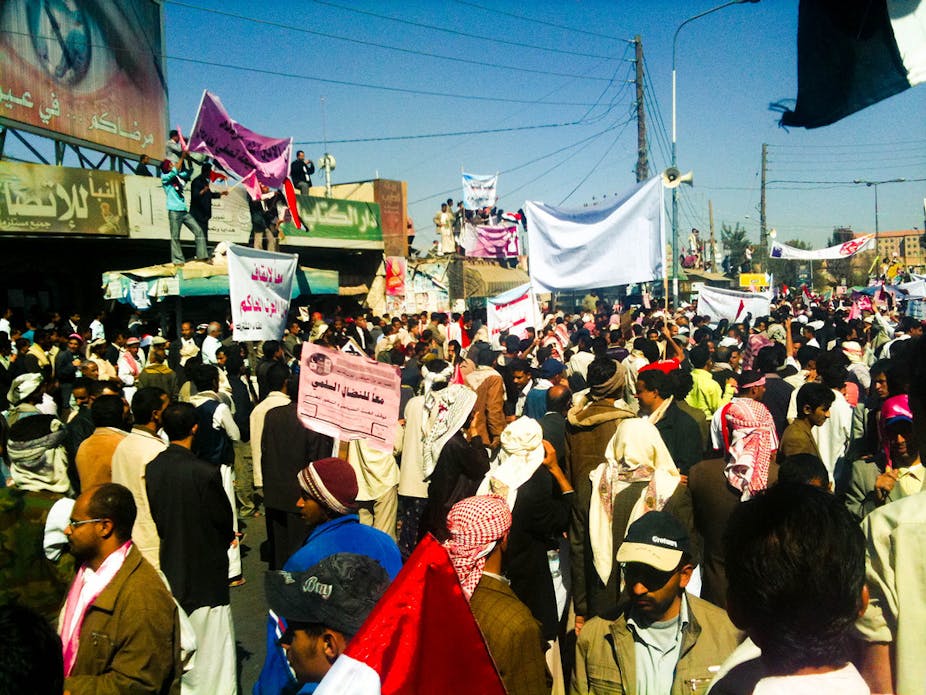Yemen is once again at the centre of a major terrorist threat. The Yemeni government has announced the uncovering of a major Al-Qaeda in the Arabian Peninsula (AQAP) plot aimed at the country’s critical oil and port infrastructure and deployed armed forces to protect potential target sites (including Western embassies in the capital, Sana'a).
What started with a world-wide US terror alert and embassy closures last week, quickly became focused on Yemen, at least in the sense that the most serious threat was located there. The UK and US not only closed their embassies (alongside France and Germany) but also withdrew diplomatic staff, and the UK urged British nationals to leave the country.
So, Yemen is again making headlines for all the wrong reasons. The current government has struggled for some time to cope with two insurgencies, in-fighting within the armed forces, and a potent threat from AQAP – widely considered as the most potent and dangerous of the terror group’s “branches” across the Middle East and North Africa. And, yet Yemen has been frequently, and so far correctly, hailed as the only one of the Arab Spring countries in which regime change has been the outcome of an internationally facilitated agreement leading to a National Dialogue Conference rather than of a violent uprising.
New offensive
There are different ways of looking at this, still evolving, situation. On the one hand, there appears to be significant evidence of a major resurgence of al-Qaeda and its affiliates in Yemen and beyond. This is obvious from a number of events over the past few weeks, from the prison breaks in Libya, Iraq, and Pakistan to the continuing escalation of violence in Iraq in particular, where July saw the largest loss of life as a consequence of terrorist attacks since the height of the sectarian civil war that had gripped the country between 2006 and 2008 (and has continued at lower levels of monthly casualty figures ever since).

In this view, local and international strategies to defeat, or at least effectively contain, the threat from al-Qaeda and violent Islamic extremism more generally, have failed and need urgent reassessment and recalibration. This would in particular include the use of drones, which, so far, had been considered as reasonably effective in degrading AQAP’s capabilities in Yemen.
A second perspective of recent events in Yemen, would, while acknowledging the continuing threat from AQAP, accept that no actual international strikes by the terror group happened. Monitoring and surveillance efforts provided the critical intelligence that allowed the preventive actions by the Yemeni government and its Western partners that we have witnessed since last week and effectively curtailed the ability of AQAP to execute any attack plans it might have had.
It may seem awfully convenient that this intelligence-based success of foiling an allegedly major plot in a geostrategically very important country comes right at a time when the debate over US surveillance policies is especially heated. Yet, conspiracy theories to one side, AQAP has long been considered a particularly dangerous al-Qaeda affiliate as it had been linked to most of the recent international plots (such as the attempt, in 2010, to smuggle bombs hidden in printer cartridges onto airplanes) from the terror network, all of which were foiled.
While the group had remained more locally focused for some time, it was never completely defeated by either US drone strikes or a Yemeni government ground offensive in the country’s restive southern provinces. Such an interpretation of events, thus, would readily accept the failure to defeat al-Qaeda and its allies, but argue that Western strategies to manage the threat it poses have succeeded so far in preventing attacks on Western interests.
Taking the long view
A third view would take a longer historical perspective of events. We must remember that the entire region has undergone several dramatic shifts over recent decades.
First, there was the Soviet invasion of Afghanistan, its defeat and withdrawal about a decade later and the long (and ongoing) Afghan civil war that followed it. Meanwhile, the first Gulf War pulled in the US and its allies - this was accompanied by the rise of al-Qaeda and 9/11 which led to the US invasions of Afghanistan and Iraq. All the while the ups and downs of the Israeli-Palestinian peace process have rumbled on - often in the background. Most recently the region has undergone more profound change as a result of the Arab Spring and its aftermath across the Middle East and North Africa.
This has led to systemic and lasting instability and rapidly increasing sectarianism in an area where governments are generally unable to elicit genuine popular support and loyalty from their populations and in which the West has interests but increasingly less leverage to shape events. These are the conditions that have facilitated the rise of al-Qaeda as a major international security threat, rooted in the radicalisation of the few, but linked to the disillusionment of the many.
Unless these conditions are changed, the threat can at best be contained. Western powers can and must play a key role in containment, if only to to create the space in which local political, religious, civic, and business leaders can eradicate the fertile ground of regime illegitimacy from which al-Qaeda will otherwise, more likely than not, rise and rise again.

